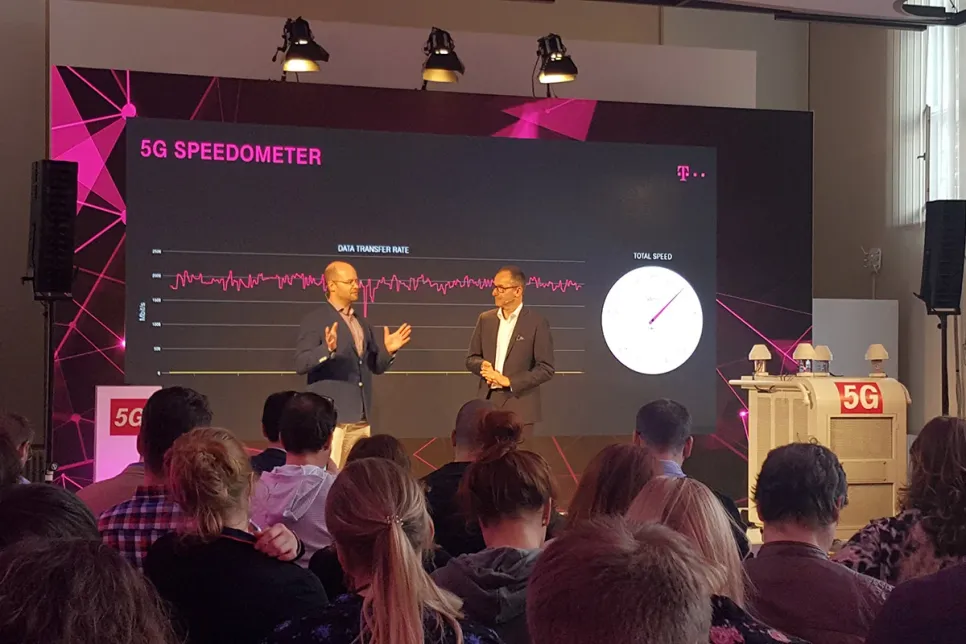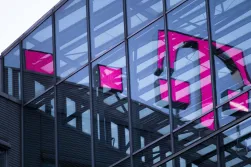Four radio cells in the Deutsche Telekom network are demonstrating the future of communication right now. The antennas in Berlin are the first in Europe with a live 5G connection in a real world setting.
Using pre-standard 5G New Radio (5G NR), the future mobile communications component of 5G, the network is achieving throughput of more than two gigabits per second to a single customer device, as well as a latency of three milliseconds on commercial sites in Berlin's Schöneberg district. Extremely high throughput and very short network reaction times are the key capabilities of 5G, which is set to drive forward the development of exciting new applications.
"We are demonstrating 5G live here, in the middle of Berlin, rather than in a lab. This is a very decisive developmental step on the way to the global launch of 5G, which is planned for 2020," said Claudia Nemat, Member of the Management Board responsible for Technology & Innovation at Deutsche Telekom. "If everything is connected to everything else, customers need a high-performance, reliable and secure network. Industry, in particular, will benefit from 5G as a powerful enabler for a wide range of applications. We are ready for 5G.
Deutsche Telekom demonstrated the network's high performance by showcasing some early application ideas that are enhanced by 5G. The augmented reality (AR) and virtual reality (VR) applications benefit from 5G’s super high data rates and real-time responses. A particular highlight was the live transmission of an ultra-high-definition video stream over 5G NR to a VR device.
"5G New Radio in Berlin is the first major step towards 5G for everybody," said Deutsche Telekom CTO Bruno Jacobfeuerborn. "As soon as the standard is defined and is available, we will proceed in 2018 to lay the foundation for large-scale build-out. This is how we are driving the technology development in Europe and demonstrate our innovation power.“
A 5G pre-standard system is the technical basis for the network in Berlin. This means that the specifications in the Huawei equipment used are following the progress of the global 3GPP specifications for the 5G New Radio standard. It is anticipated that the specifications of the system used will be completed by 3GPP in December 2017.
“5G is getting close to prime time. The successful live transmission over 5G is an important technical contribution to the 5G community for the two companies. Huawei will continue investing in Research & Development and enhance its cooperation with partners to make progress in 5G technology and the development of an industry ecosystem,“ said Deng Tai Hua, president of the Huawei Wireless Network Product Line.
To accelerate the development of new applications for 5G, Deutsche Telekom recently launched the Low Latency Prototyping Programs at its hub:raum sites in Berlin and Krakow. The programs are aimed at innovative developers who want to develop products benefitting from Edge Computing, as well as 5G network performance as it emerges.
Deutsche Telekom is piloting the use of 5G for industry at the Port of Hamburg. The aim is to tailor the 5G network to meet the diverse requirements of the port. Traffic control data, reliable traffic light steering, and environmental monitoring, are the first application scenarios for 5G. This enables the digital transformation of the port to support its future growth.


















